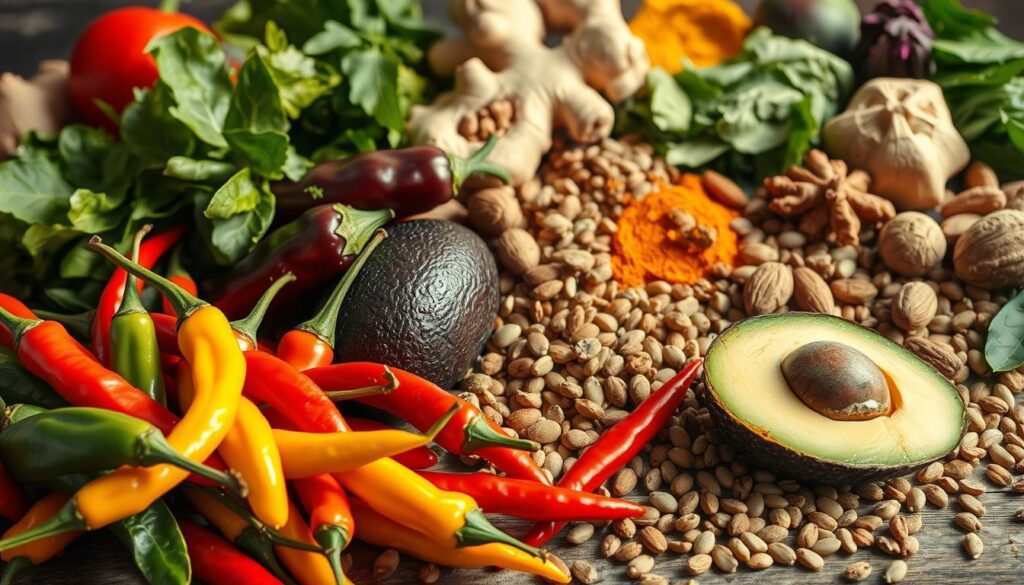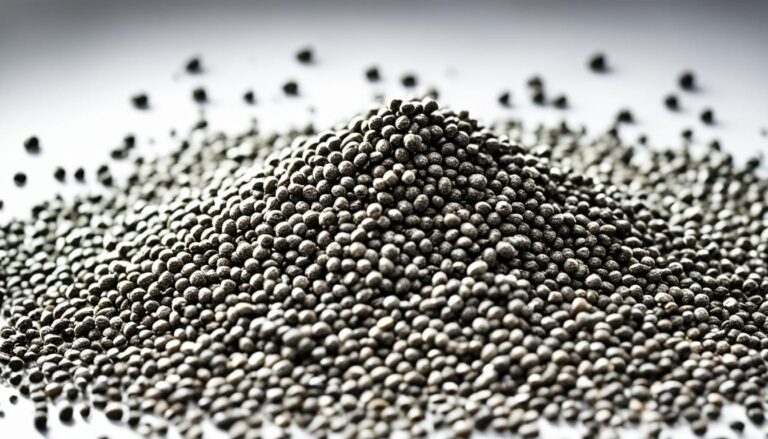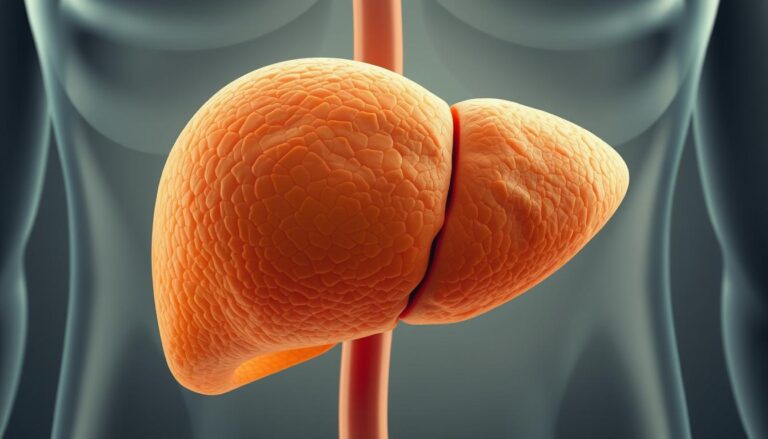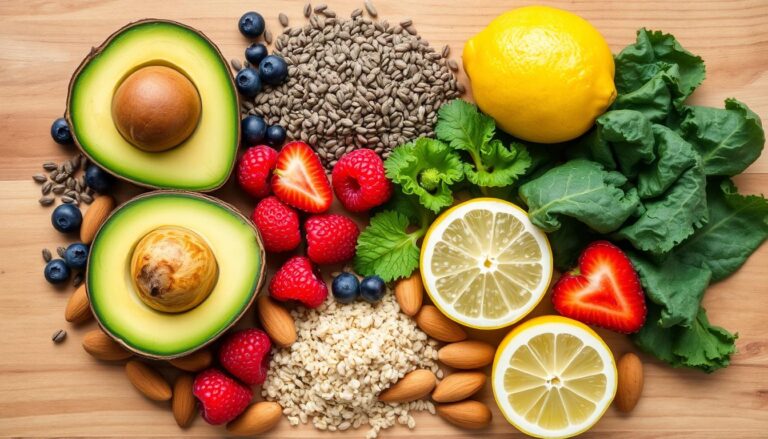Are certain foods the key to unlocking a faster metabolism and achieving weight loss?
As we age our body’s metabolic rate often slows down making it challenging to maintain a healthy weight despite adhering to the same diet. Fortunately research suggests that incorporating specific foods into our daily eating patterns can naturally boost metabolism and support overall health.
Among these metabolism-enhancing foods are chili peppers and avocados, which have been shown to have a positive impact on metabolic function. By understanding how these foods work within the body to increase calorie burning and energy expenditure individuals can make informed choices about their diet to support their weight management goals.
Key Takeaways
- Certain foods can naturally enhance metabolic function.
- Chili peppers and avocados are examples of metabolism-boosting foods.
- Incorporating these foods into your diet can support weight management.
- A faster metabolism is crucial for overall health and weight control.
- Making informed dietary choices is key to boosting your metabolic rate.
The Science Behind Metabolism and Weight Loss
Metabolism is the body’s way of converting food into energy, a complex biochemical process. It encompasses various physiological functions, from breathing to physical activity, and is essential for maintaining life.
Understanding Your Metabolic Rate
The metabolic rate is a measure of how efficiently the body burns calories. The basal metabolic rate BMR accounts for approximately 60-75% of daily calorie expenditure even at rest. Factors such as age, activity level, and body composition influence an individual’s metabolic rate. A higher metabolic rate can facilitate weight loss and maintenance.
How Food Affects Your Metabolism
The thermic effect of food TEF is the energy expended by our bodies to process and utilize nutrients. Protein-rich foods have been shown to have a higher TEF compared to carbohydrates and fats, potentially boosting metabolism. Certain compounds in foods can also induce thermogenesis, a process that increases metabolic rate temporarily.
| Nutrient | Thermic Effect |
|---|---|
| Protein | High |
| Carbohydrates | Moderate |
| Fats | Low |

Metabolism Power Chili Peppers Avocados Revealed
Incorporating chili peppers and avocados into your diet can be a strategic move for boosting your metabolism. These foods work through different but complementary mechanisms to enhance metabolic function.
The Capsaicin Effect in Chili Peppers
Chili peppers contain capsaicin, a chemical that has been shown to boost metabolism by increasing the number of calories burned.
A review of 20 research studies found that capsaicin can help burn around 50 extra calories daily. Capsaicin activates thermogenesis by binding to receptors that signal the body to generate heat and burn more calories.

Healthy Fats in Avocados
Avocados are rich in monounsaturated fats, which support metabolic health differently than other dietary fats. A study published in The American Journal of Clinical Nutrition found that a diet high in monounsaturated fats resulted in more energy and increased calorie burning.
The unique fat profile of avocados makes them an ideal food for metabolic enhancement.
| Food | Metabolic Benefit | Key Component |
|---|---|---|
| Chili Peppers | Boosts calorie burning | Capsaicin |
| Avocados | Supports metabolic health | Monounsaturated Fats |
The Fiery Power of Chili Peppers

The compound that gives chili peppers their signature heat is capsaicin, which has been studied for its metabolic benefits. Capsaicin is the key to understanding how chili peppers can influence our metabolism.
How Capsaicin Boosts Calorie Burning
Capsaicin activates brown adipose tissue BAT, a type of fat that burns calories to generate heat in a process called thermogenesis. This activation can lead to an increase in energy expenditure, helping the body burn more calories. Studies have shown that consuming capsaicin can result in measurable increases in metabolism.
Research Backed Benefits
Research on capsaicin has highlighted its potential benefits beyond just boosting metabolism.
It has been shown to help regulate appetite and may even contribute to pain relief and cardiovascular health. Different varieties of chili peppers contain varying levels of capsaicin, from the mildly spicy bell peppers to the intensely hot ghost peppers and Carolina reapers.
Avocado The Creamy Metabolism Booster

Avocados are not just a trendy ingredient they’re a metabolic powerhouse. The health benefits of avocados include plenty of healthy monounsaturated and polyunsaturated fats to help boost your metabolism and keep hunger at bay.
Monounsaturated Fats and Energy Expenditure
Avocados are rich in monounsaturated fats, particularly oleic acid, which supports cellular energy processes and mitochondrial function. This unique fat profile contributes to metabolic enhancement helping your body burn energy more efficiently.
Nutrient Profile That Supports Metabolism
The nutrient-dense profile of avocados includes fiber, vitamins, and minerals that serve as cofactors in metabolic pathways. The fiber content in avocados contributes to satiety and digestive health indirectly supporting metabolic function. Additionally avocados can help reduce visceral fat accumulation which is detrimental to metabolic health.
5 Other Foods That Supercharge Your Metabolism
Chili peppers and avocados are just the beginning there are numerous other foods that can supercharge your metabolic rate. Incorporating a variety of these foods into your diet can provide a comprehensive approach to enhancing your metabolic health.
Protein Rich Foods Milk Tempeh, and Lentils
Foods high in protein are known to naturally boost metabolism. Milk, with approximately eight grams of protein per cup, is an excellent choice.
Tempeh offering around 15 grams of protein per half cup, is another great option. Lentils rich in protein and fiber support both metabolic rate and gut health. These protein-rich foods have a high thermic effect requiring more energy to digest and thus enhancing metabolic rate.
Green Powerhouses Kale and Green Tea
Kale and other leafy greens are rich in iron which plays a crucial role in oxygen transport and cellular energy production, directly impacting metabolic function.
Green tea, with its high content of catechins like EGCG, has been shown to increase fat oxidation and energy expenditure. Incorporating these green powerhouses into your diet can further support your metabolic health.

Combining these foods with chili peppers and avocados can create a synergistic effect, enhancing your metabolic rate and overall health. A diverse diet that includes a range of metabolism-boosting foods can provide more comprehensive benefits than relying on just one or two superfoods.
Easy Ways to Add Chili Peppers to Your Diet
Chili peppers are not just a flavorful addition to your meals they also offer a metabolic boost. Incorporating them into your diet can be straightforward and delicious.
Spicy Recipes for Beginners
For those new to spicy foods, starting with mild recipes is key. Try adding sliced chili peppers to your favorite burger or sub sandwich. You can also make a mild chili-infused soup or prepare poblano-stuffed bell peppers for a flavorful and healthy meal.
Using Chili Powders and Flakes
If fresh peppers aren’t your preference, chili powders and flakes are convenient alternatives. Use them to season meat, add a kick to your pasta sauce, or sprinkle over vegetables for a spicy flair. When using chili powders or flakes, start with a small amount and adjust to taste to avoid overwhelming your dishes.

Creative Avocado Recipes for Metabolic Health
The versatility of avocados makes them an ideal ingredient for various recipes that support metabolic well-being. Avocados are rich in healthy fats that not only enhance the flavor of dishes but also contribute to a faster metabolism.
Beyond Avocado Toast
While avocado toast remains popular there are many other creative ways to incorporate avocados into your diet. You can use them in salad dressings as a topping for omelets or even blend them into smoothies for a creamy texture. Experimenting with different recipes can help keep your diet interesting and ensure you’re getting the metabolic benefits of avocados.
Avocado as a Healthy Fat Substitute
Avocados can be used as a healthier substitute for traditional fats in baking and cooking. For instance you can replace butter or oil with mashed avocado in recipes, which not only reduces saturated fat intake but also adds nutrients. This substitution can be a great way to make your favorite dishes healthier without compromising on taste.
Combining Metabolism Boosting Foods for Maximum Effect
Strategic food pairing is key to unlocking the full potential of metabolism-boosting foods. By combining specific foods, individuals can create synergistic effects that enhance metabolic function and support overall health.
Meal Planning Strategies
Effective meal planning is crucial for incorporating metabolism-boosting foods into your diet.
This involves selecting a variety of foods known to enhance metabolic rate such as chili peppers avocados protein rich foods and green powerhouses like kale and green tea. Combining capsaicin rich foods with proteins can extend metabolic elevation. For example, adding chili peppers to a lentil or tempeh dish can boost the metabolic benefits.
Sample Day of Metabolism Boosting Meals
A sample day of metabolism-boosting meals could include:
- Breakfast: Avocado toast with a sprinkle of chili flakes and a glass of green tea.
- Lunch: Grilled chicken breast with a kale salad and a citrus vinaigrette dressing.
- Snack: A handful of raw almonds and a piece of fruit.
- Dinner: Lentil soup with a dash of cayenne pepper, served with a side of steamed vegetables.
| Meal | Foods | Metabolic Benefit |
|---|---|---|
| Breakfast | Avocado toast with chili flakes | Boosts metabolism with healthy fats and capsaicin |
| Lunch | Grilled chicken with kale salad | Combines protein with metabolism-enhancing greens |
| Dinner | Lentil soup with cayenne pepper | Protein-rich lentils paired with thermogenic capsaicin |
By incorporating these metabolism-boosting foods and meal strategies into your diet you can potentially enhance your metabolic function and support your overall health goals.
Conclusion Harnessing the Power of Food for a Healthier Metabolism
Ultimately, the key to harnessing the power of food for a healthier metabolism lies in combining the right dietary choices with other lifestyle factors. Incorporating chili peppers and avocados into your diet can enhance your metabolic health. A balanced approach that includes various foods and considers overall health and energy levels is crucial.
By adopting a long-term strategy that includes a balanced diet and healthy lifestyle habits, individuals can achieve sustainable weight loss and improved overall health.





